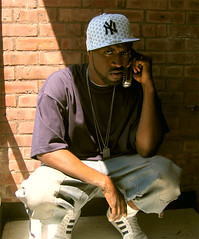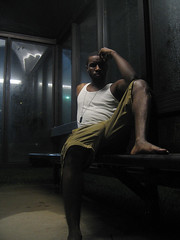On the Dissertation Tip
Well folks, it's a watershed moment in the life of your boy LarryLy. After 4+ years of coursework, qualifying exams and teaching, I've finally arrived at the place I've been dreaming about since I decided on a career in the academy: DISSERTATION STAGE!
Because the debates and discussions on this blog have been instrumental in preparing me to think critically about the intersection of text and image as it relates to issues of race, class and gender in 20th Century America, I am excited to share with you the first portion of my dissertation research -- an ambitious engagement of the work of African-American photographer Gordon Parks alongside that of folklorist/author Zora Neale Hurston.

Gordon Parks’ rise as a documentary photographer allowed him to intervene in the revision of America’s national identity during a crucial moment in the country’s history: the advent of mass culture in the 1930s. Pursuing the Farm Services Administration’s goal of “introducing America to Americans,” Parks’ early work exposed the infringement of mass culture upon local cultures, particularly the ways in which farm mechanization signaled major changes in the profile of working-class labor.
My research explores the conversation between Zora Neale Hurston’s Mules and Men (1935) Their Eyes Were Watching God (1937) and Dust Tracks on a Road (1942) and Parks’ work with the FSA. I am particularly interested in the possible relationships between black laborers’ experiences of the Farm Services Administration and the Federal Security Administration, which scholars have discussed in terms of its interventions in the town of Belle Glade, Florida (the town upon which Hurston bases her fictional accounts of “the muck”). How might these identically acronymed government programs have come to represent the heavy-handed surveillance of white capitalism for black rural laborers during the 1930s and 1940s? And how might this connection revise popular beliefs about the laborers’ relation to the white capitalist authority structure?
I argue that Hurston’s texts and Parks’ images help us discern how the economic shifts of the early 20th century impacted visual and literary interrogations of (and challenges to) white male hegemony and how that process impacted the emergence of the black middle class.




